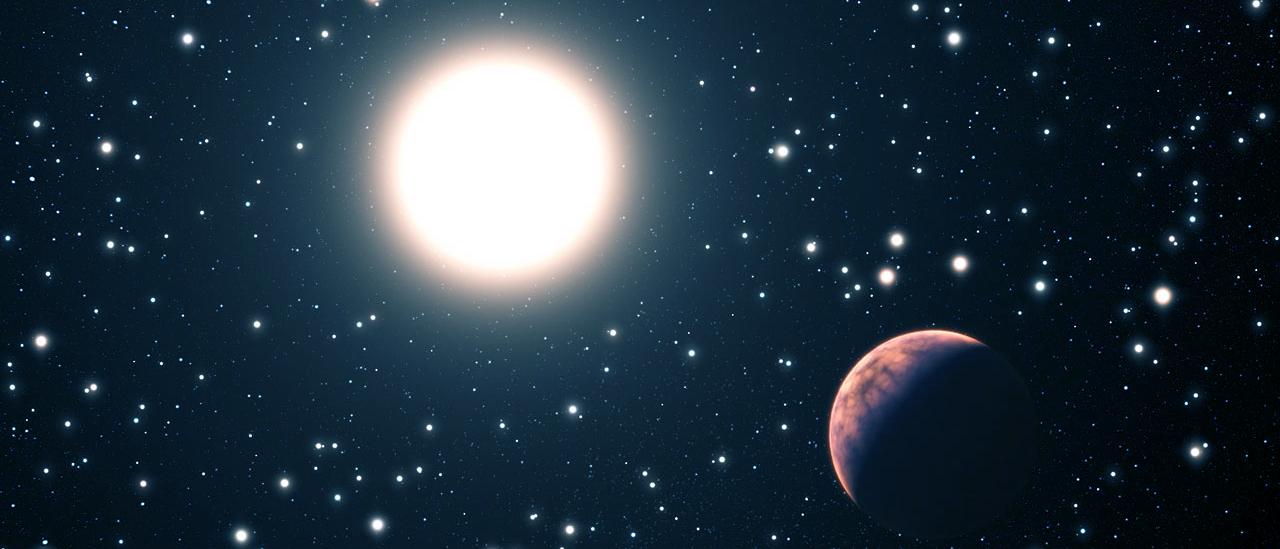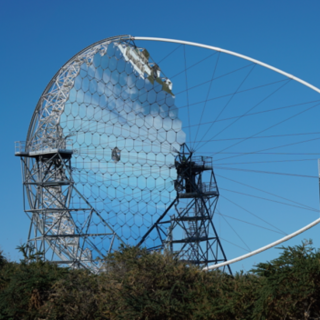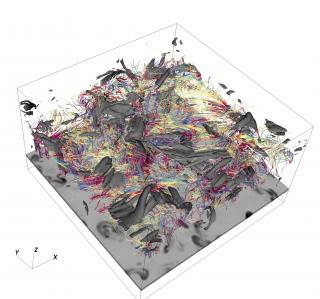General
Recientemente se han llevado a cabo varios análisis espectroscópicos de estrellas con planetas. Uno de los resultados más relevantes ha sido descubrir que las estrellas con planetas son en promedio más metálicas que las estrellas del mismo tipo espectral sin planetas conocidos (Santos, Israelian & Mayor 2001, A&A, 373, 1019; 2004, A&A, 415, 1153). Existen dos hipótesis posibles para relacionar el exceso de metalicidad con la presencia de planetas. La primera es la del “autoenriquecimiento” que atribuye el origen de la sobreabundancia de metales observada en estrellas con planetas a la acreción sobre la estrella madre de grandes cantidades de material planetario rocoso, rico en metales y pobre en elementos como H y He. La hipótesis contraria es la principal y considera que el exceso de metales sea debido al alto contenido en metales de la nube protoplanetaria a partir de la cual se formó el sistema estrella-planeta.
Los elementos ligeros pueden proporcionar información valiosa sobre la mezcla, la difusión y la evolución del momento angular en estrellas con planetas, así como sobre la actividad estelar causada por la interacción con exoplanetas (Santos, Israelian, García López et al. 2004, A&A, 427, 1085; Israelian et al. 2004, A&A, 414, 601). Estudios sobre el berilio, el litio y la razón isotópica 6Li/7Li podrían aportar pruebas para distinguir entre las diferentes teorías de formación planetaria (Sandquist et al. 2002, ApJ, 572, 1012). Israelian et al. encontraron evidencias de la caída de un planeta o de material protoplanetario sobre la estrella HD82943 (2001, Nature, 411, 163; 2003, A&A, 405, 753).
Si el “autoenriquecimiento” fuera el principal responsable del exceso de metalicidad de las estrellas con planetas, eso implicaría una sobreabundancia relativa de elementos refractarios (Si, Mg, Ca, Ti, etc.) respecto a los volátiles (CNO, S y Zn). Se han llevado a cabo varios estudios espectroscópicos del hierro (Santos et al. 2001, A&A, 373, 1019; 2003, A&A, 398, 363; 2004, A&A, 415, 1153) y de otros elementos (Bodaghee et al 2003, A&A, 404, 715; Ecuvillon, Israelian, Santos et al. 2004, A&A, 418, 703; 2004, A&A, 426, 619; 2006, A&A, 445,633; 2006, A&A, 449, 809; Gilli, Israelian, Ecuvillon, et al. 2006, A&A, 449,723).
El análisis espectroscópico de estrellas ricas en metales también proporciona información valiosa sobre las tasas de eyección al medio interestelar de elementos químicos producidos por explosiones de supernova en los últimos 10 mil millones de años. Otro método alternativo para investigar los productos de las explosiones de supernova es el estudio de las estrellas compañeras de los sistemas binarios de rayos X.
Miembros
Resultados
- La correlación planeta-metalicidad se revisa y muestra que la distribución de metalicidad de las estrellas que albergan planetas de baja masa (por debajo de 30 M⊕) es indistinguible de la de la muestra de vecindario solar en términos de distribución de metalicidad.
- Encontramos que las correcciones 3D 6Li / 7Li son siempre negativas, lo que demuestra que el análisis 1D LTE puede sobreestimar significativamente la presencia de 6Li (hasta 4.9% puntos) en las atmósferas de estrellas enanas de tipo solar. Aunque la síntesis espectral NLTE 3D implica un esfuerzo computacional extenso, los resultados pueden hacerse accesibles con herra
- Hemos analizado el comportamiento de las abundancias químicas de Cu, Zn, Sr, Y, Zr, Ba, Ce, Nd y Eu en la muestra de búsqueda de planetas HARPS-GTO grande y homogénea. Comparamos las relaciones [X / Fe] de tales Elementos en diferentes bandejas de metalicidad y encontramos que los anfitriones de los planetas presentan mayores abundancias de Zn para [Fe / H]
- Encontramos que el 100% de la muestra planetaria en HARPS-GTO presenta C / O> 0,4, mientras que el 14% presenta valores de C / O inferiores a 0,4. Con respecto al Mg / Si, todas las estrellas con compañero planetario de baja masa mostraron valores entre uno y dos.


